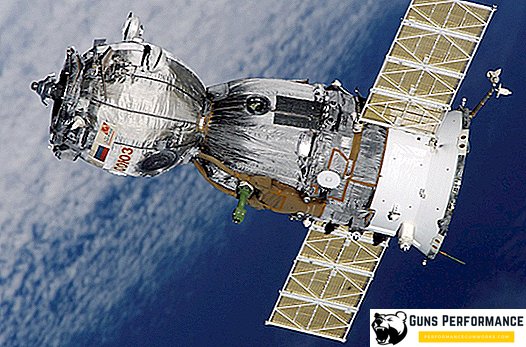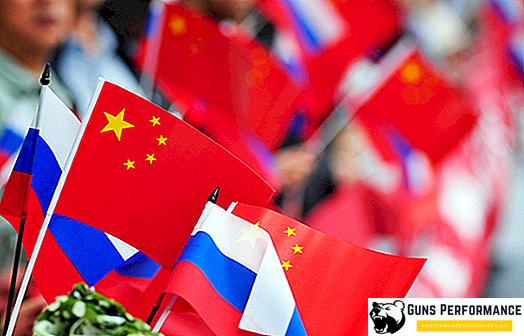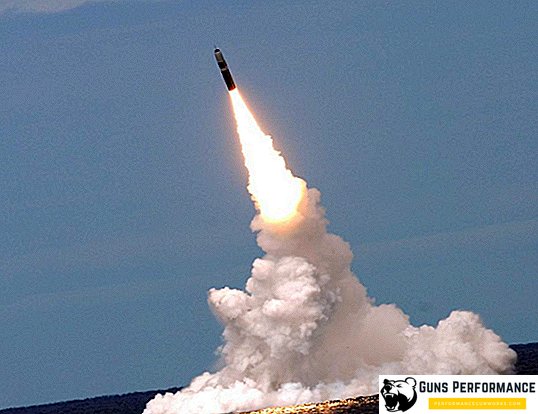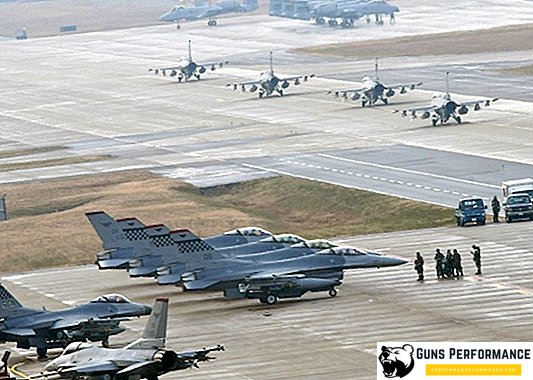As we all know, our overseas partners in the nuclear disarmament race have announced that they will withdraw from the treaty on the elimination of medium and short-range missiles, the so-called INF, in the foreseeable future. Well, as usual, they blamed Russia for everything. They say that we did not observe something there again. And even deliberately violated. But let's not rush to conclusions.
How it all began
In the ancient times of the bloom of the notorious stagnation of the USSR, their ballistic missiles began to unfold on their western limits. These were the famous SS-20, referred to in the world as "Pioneer". The United States, in turn, assumed the "double plan for the re-equipment of Europe." And their terrible Pershing-II bristled Germany, Britain, Italy, Belgium and the Netherlands. And no one there squeaked about their placement. Everything is grandly noble: the mines were dug, the rockets were inserted into them.
And, of course, in parallel with the deployment of medium-range ballistic missiles, negotiations began on their reduction. The usual thing - everyone wants to live. And live in safety and, preferably, in the reach of enemy missiles. The Caribbean crisis is a clear confirmation of this.
In general, a compromise was seriously discussed on the fact that the USSR transports the SS-20 to the Urals and the Americans are withdrawing their Pershing from Europe.
Recall, on December 8, 1987, General Secretary of the CPSU Central Committee Mikhail Gorbachev and US President Ronald Reagan signed an agreement on the elimination of medium-range and shorter-range missiles (INF) in Washington. The agreement entered into force on June 1, 1988.
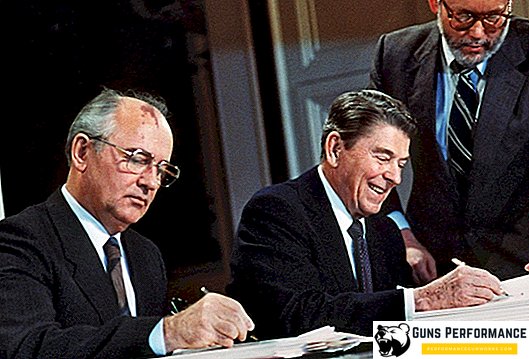
What agreed
In accordance with the Agreement, the USSR and the USA should destroy all the complexes of ballistic and cruise missiles of ground-based medium (1-5,5 thousand km) and shorter (0.5-1 thousand km) range within three years. In addition, both sides had no right to further produce and test them.
And in order to eliminate mutual deceit, a revision algorithm was developed. For 13 years, until the summer of 2001, the parties had to inspect each other’s territories for the absence of these most notorious missiles.
What time to cut
So, the USSR destroyed five items of ballistic missiles. Naturally, first of all, the Pioneers were destroyed with a range of over 5,000 km of flight. It also abolished the already outdated R-12 and R-14 with a lethal range of 2500 and 4500 km, respectively. Similarly, "Temp-S" with a range of 900 km. Why cut the "Oka" is not falling under the destruction (just a 400 km) is not clear. Apparently this was the exceptionally good will of the Soviet people and its leaders.
It was most impressive to destroy the RK-55 "Relief" of 1986, with a range of 2,600 km. They did not even have time to deliver them to the military escorts. It got to the point of absurdity: they were produced at one factory, and destroyed at the next.
A total of 1,836 missiles were reduced in the USSR and 851 launchers destroyed.

In turn, the United States eliminated 859 missiles and destroyed 238 launchers.
The bulk of the destroyed missiles were Pershing-IA from 740 km and Pershing-II from 1770 km. Just went under the cut Tomahawk BGM-109G. Her kill distance was 2500 km.
The Agreement, signed by Reagan and Gorbachev, is, in general, indefinite. However, there is a nuance, each of the countries can withdraw from the treaty unilaterally, if its supreme state interests are endangered. She must inform the other party about the exit decision, at least six months in advance.
Mutual accusations
The first call was a statement by Russian President Vladimir Putin in October 2007. He noted that he did not exclude the possibility of withdrawing from the INF Treaty, since many states are engaged in the development of nuclear weapons, and Russia is constrained by the Agreement.
By the way, at the moment, indeed, five countries - Israel, India, China, the DPRK and Pakistan - possess ballistic missiles. And in some states there are missiles of this class in the usual equipment. That is, Russia had a reason to express concern about the situation.
And in July 2014, US President Barack Obama did not fail to officially blame Russia for testing medium-range cruise missiles. Like, break!
Speech, as it turned out, was about the SSC-8 rocket with a lethal range of up to 500 km. It is produced on the basis of the sea-based 3M-54 "Caliber". Moscow denies breach of contract, since SSC-8 does not generally fall under the terms of the Agreement. And in turn puts forward counterclaims to the United States.
In particular, the US military is using the Hera, LRALT and MRT missiles to test the missile defense system. According to Russian experts, in their tactical and technical characteristics they very much resemble medium-range ballistic missiles.
Russia also found a breach of contract in the use of Reaper and Predator drone drone with a range of more than 500 km.
In addition, the Russian side was outraged by the deployment in Poland and Romania of Mk 41 launchers, which seemed to be defensive. However, they can easily be used to launch cruise missiles.
Danger under the red banner
According to some experts, the United States made such a harsh statement because they fear not Russia, but China. And our country was focused on in order to distract the views of the world community. According to the US military, China has more than 300 ballistic missiles in stock. And 30 of them with the killer range of the Pioneer. Also in service with the celestial is more than 1,000 short-range missiles.

Of course, in terms of the scope of the military-industrial complex, China has become one of the leading powers in the world. Unconnected by any contractual obligations, he achieved the development of the Soviet Union’s Cold War indicators in the development of nuclear weapons. And soon he will be able to play his own violin on the world stage. And, of course, it inspires fear to the rulers of the United States. And one cannot but rejoice at the fact that we are military strategic partners with China.


